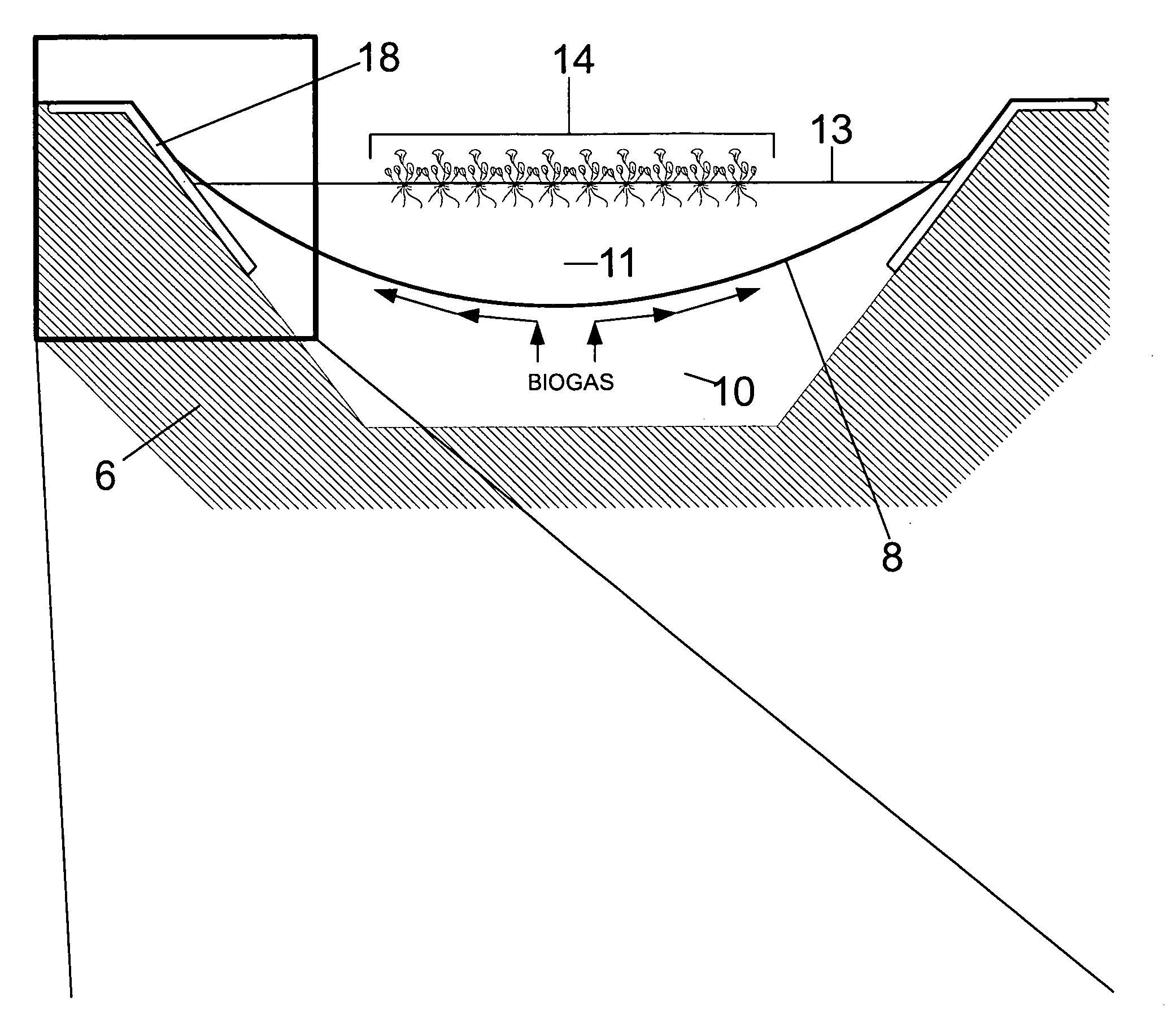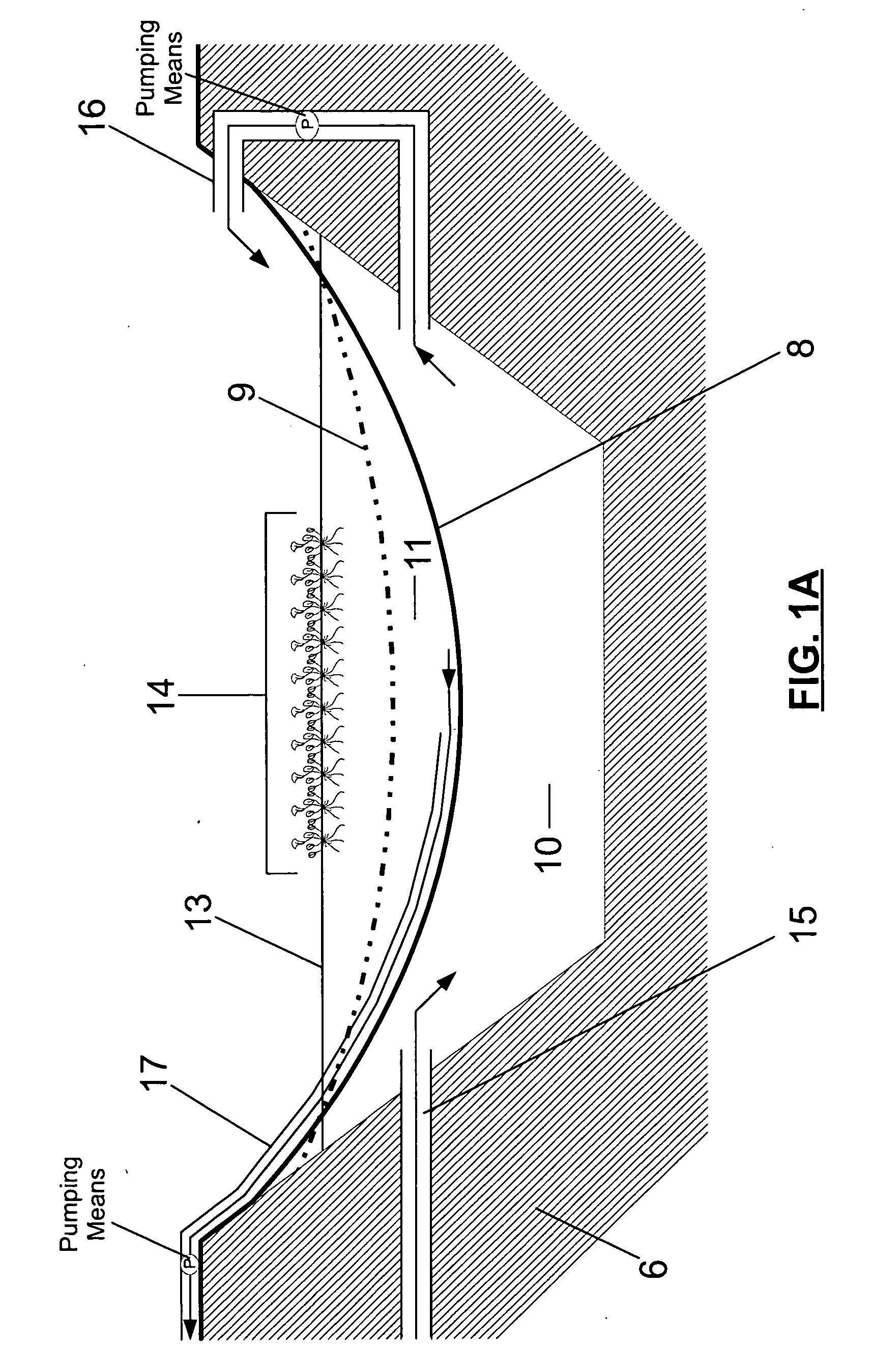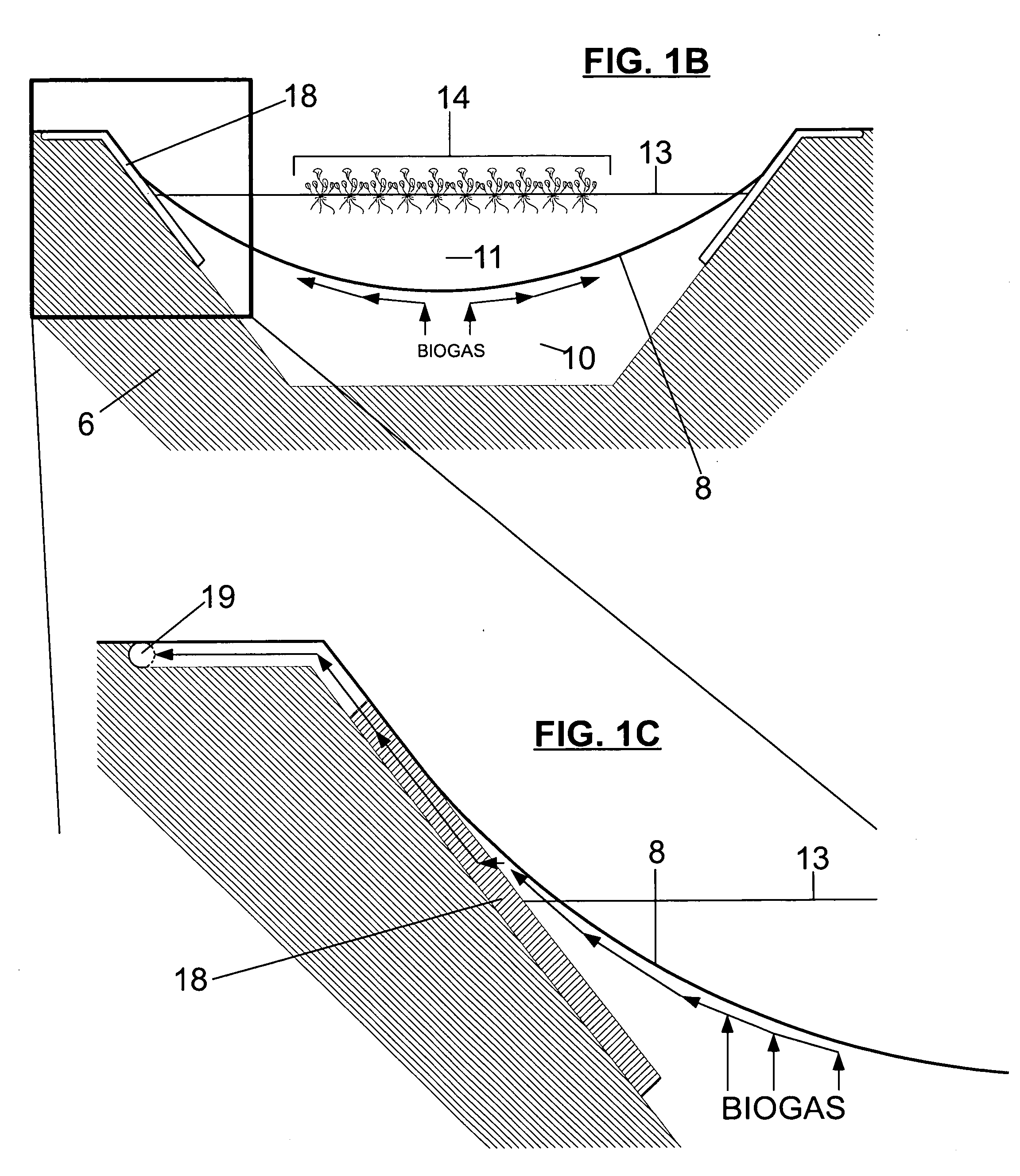Apparatus and Method for Agricultural Animal Wastewater Treatment
a technology for agricultural animals and wastewater treatment, applied in the direction of multi-stage water/sewage treatment, other chemical processes, separation processes, etc., to achieve the effect of facilitating biogas collection, reducing land area and upfront construction costs, and reducing land area
- Summary
- Abstract
- Description
- Claims
- Application Information
AI Technical Summary
Benefits of technology
Problems solved by technology
Method used
Image
Examples
first embodiment
—FIGS. 1A, 1B, 1C, 1D, 2A
[0084]A first embodiment of the apparatus and method is illustrated by FIGS. 1A-1D and FIG. 2A. FIG. 1A illustrates how a sheet of material 8 subdivides an existing or newly constructed anaerobic lagoon 6 to create an anaerobic digestion treatment zone 10 below the sheet of material 8 and a floating aquatic plant treatment zone 11 above the sheet of material 8. Both treatment zones are sufficiently sized to allow for temporary storage. The sheet of material 8 is flexible and impermeable. The sheet of material's 8 flexibility is illustrated in FIG. 1A with an alternate position of the sheet of material 9 that results from changes in the liquid volume of the two treatment zones. FIG. 1A also illustrates several conveyance means and the direction of flow through the treatment zones. FIGS. 1B-1D illustrate how the sheet of material 8 diverts biogas evolving from anaerobic digestion treatment 22 in the anaerobic digestion treatment zone 10 to a biogas collection ...
second embodiment
Description—FIGS. 1A, 1B, 1C, 1D, 2B
[0125]A second embodiment of the apparatus and method is illustrated by FIGS. 1A-1D and FIG. 2B and is very similar to the first embodiment with the exception being the absence of specificities related to the the useful purposes for biogas and floating aquatic plant biomass. FIG. 1A illustrates how a sheet of material 8 subdivides an existing or newly constructed anaerobic lagoon 6 to create an anaerobic digestion treatment zone 10 below the sheet of material 8 and a floating aquatic plant treatment zone 11 above the sheet of material 8. Both treatment zones are sufficiently sized to allow for temporary storage. The sheet of material 8 is flexible and impermeable. The sheet of material's 8 flexibility is illustrated in FIG. 1A with an alternate position of the sheet of material 9 that results from changes in the liquid volume of the two treatment zones. FIGS. 1B-1D illustrate how the sheet of material 8 diverts biogas evolving from anaerobic diges...
third embodiment
Description—FIGS. 1A and 2C
[0127]A third embodiment of the apparatus and method is illustrated by FIGS. 1A and 2C and is very similar to the second embodiment with the exception being that this embodiment does not incorporate a biogas collection means or useful purposes for biogas or floating aquatic plant biomass. FIG. 1A illustrates how a sheet of material 8 subdivides an existing or newly constructed anaerobic lagoon 6 to create an anaerobic digestion treatment zone 10 below the sheet of material 8 and a floating aquatic plant treatment zone 11 above the sheet of material 8. Both treatment zones are sufficiently sized to allow for temporary storage. The sheet of material 8 is flexible and impermeable. The sheet of material's 8 flexibility is illustrated in FIG. 1A with an alternate position of the sheet of material 9 that results from changes in the liquid volume of the two treatment zones. FIG. 2C is a flow chart illustrating the method of this embodiment that the apparatus of t...
PUM
| Property | Measurement | Unit |
|---|---|---|
| Area | aaaaa | aaaaa |
Abstract
Description
Claims
Application Information
 Login to View More
Login to View More - R&D
- Intellectual Property
- Life Sciences
- Materials
- Tech Scout
- Unparalleled Data Quality
- Higher Quality Content
- 60% Fewer Hallucinations
Browse by: Latest US Patents, China's latest patents, Technical Efficacy Thesaurus, Application Domain, Technology Topic, Popular Technical Reports.
© 2025 PatSnap. All rights reserved.Legal|Privacy policy|Modern Slavery Act Transparency Statement|Sitemap|About US| Contact US: help@patsnap.com



